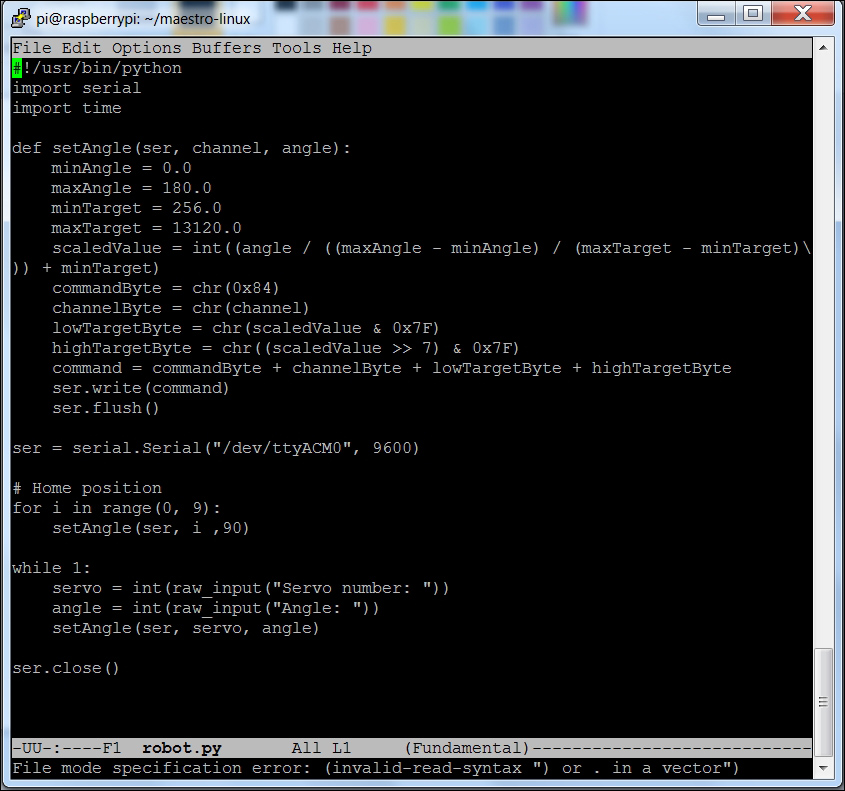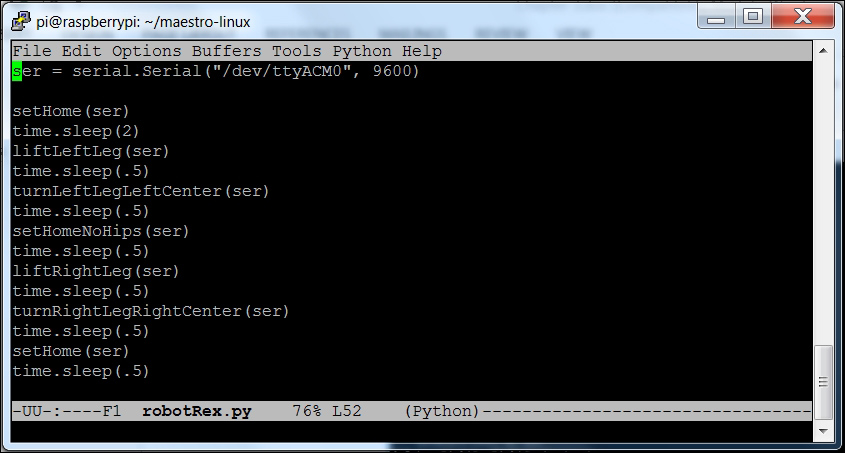Now that you've got your biped all up and running, you can start developing interesting ways to make it move. In this chapter, you'll learn
How to adjust the positions of your servos for the Tyrannosaurus Rex pose
The basic walking gait for your robot
The basic turn for your robot
Before you begin, however, it will be best if you create a harness for your biped. Your robot is going to be inherently unstable with only two legs, and, as you experiment, you're going to make some mistakes. With only two legs, these mistakes can, and probably will, result in your robot toppling over, which can damage the robot.
If you have an electronics board vise, or an "Extra Hands" device, they can be useful for this purpose. Here is a picture of how to use this device to create a harness:

If you don't, you can easily create this sort of overhead support using a PVC pipe or wood. Really, just something to keep your biped from crashing over during your experimentation.







